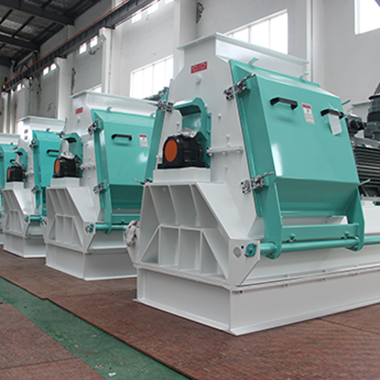해머 밀은 사료 및 비료 가공 산업뿐만 아니라 바이오매스 가공 산업에서도 중요한 역할을 합니다. 이제, 가축 사료, 유기 비료를 처리하거나 바이오매스 재료를 분쇄하더라도, 해머 밀의 출력 용량이 클수록 작업이 더 효율적이고 수익성이 높아집니다.
다음은 해머 밀의 생산성을 높이는 데 중요한 몇 가지 팁입니다:
원료 특성 최적화하기
원료의 특성은 분쇄 효율에 큰 영향을 미칠 수 있습니다.
수분 함량 - 과도한 수분은 막힘과 저출력을 초래합니다. 성능을 위해 수분은 12-15% 이하로 유지해야 합니다.
입자 크기 - 큰 재료(예: 옥수수 줄기, 나무 칩)를 분쇄할 때, 햄머 밀에 넣기 전에 사전에 부수면 에너지 낭비를 최소화하는 데 도움이 됩니다.
균일한 급여 - 과다하거나 불규칙하게 급여하면 모터의 과부하와 불규칙한 분쇄가 발생할 수 있습니다.
적절한 화면 크기를 선택하세요
스크린(또는 체)는 최종 입자 크기를 조절합니다.
더 큰 스크린 개구부는 출력을 증가시키지만 더 거친 입자를 생성합니다.
작은 스크린은 제품을 세밀하게 만들지만 용량이 감소할 수 있습니다.
해결책: 원하는 미세도에 맞는 스크린 크기를 선택하면서 프로세스 병목 현상을 방지하세요.
햄머 밀 날개(햄머) 및 스크린 유지보수
마모된 햄머와 손상된 스크린은 효율성을 떨어뜨립니다.
햄머 마모 확인 - 둔하거나 균형이 깨진 햄머는 충격력을 줄이고 에너지 소비를 늘립니다. 정기적으로 회전하거나 교체하세요.
스크린 점검 – 구멍은 깨끗하고 막힘 없이 유지되어야 합니다. 일관된 입자 크기를 유지하기 위해 손상된 스크린을 교체하세요.
최적 성능을 위해 로터 속도 조절하기
높은 로터 속도 = 더 미세한 입자, 그러나 모터가 과부하되면 용량이 줄어들 수 있습니다.
낮은 속도 = 더 거친 출력으로 처리량이 증가합니다.
팁: 재료의 경도와 원하는 세기 정도에 따라 속도를 조정하세요.
적절한 공기 흐름과 배출 시스템 확보하기
불충분한 공기 흐름은 열 축적과 재료 막힘을 초래합니다.
물질 흐름과 냉각을 개선하기 위해 흡입 팬을 사용하세요.
배출 시스템의 막힘을 방지하기 위해 사이클론 분리기나 가방 필터를 점검하세요.
정기적인 유지 보수 및 윤활
마찰과 마모를 줄이기 위해 베어링과 움직이는 부품에 그리스를 발라 주세요.
진동과 정렬을 방지하기 위해 느슨한 볼트와 벨트를 고정하십시오.
문제를 적시에 식별하기 위해 정기적인 점검을 실시하십시오.
고용량 해머 밀로 업그레이드하십시오
현재 밀이 수요에 따라 처리할 수 없는 경우 다음을 참조하십시오:
더 단단한 재료에 사용할 증강된 마력 모터.
더 긴 수명의 해머.
균일한 흐름을 위해 컴퓨터화된 급여 시스템.
상해 원유다 국제 무역 유한 회사(리양 유다 기계의 자회사)는 사료, 비료 및 바이오매스 처리에 사용되는 고효율 해머 밀을 제공합니다. 우리는 생산 용량을 최적화할 수 있도록 맞춤형 설계, 일괄 해결책 및 사후 판매 서비스를 제공합니다.
마무리 생각
물질 취급 물질 취급, 장비 유지 관리 및 설정 선택을 최적화하면 해머 밀의 출력을 크게 높일 수 있습니다. 숙련된 컨설팅이나 강력한 기계가 필요합니까? 우리에게 전화 주시면 해결책을 찾아드리겠습니다!

 EN
EN















